Triethoxysilane
- CAS NO.:998-30-1
- Empirical Formula: C6H16O3Si
- Molecular Weight: 164.27
- MDL number: MFCD00009061
- EINECS: 213-650-7
- SAFETY DATA SHEET (SDS)
- Update Date: 2025-09-25 17:15:13
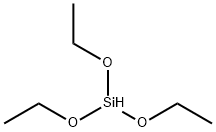
What is Triethoxysilane?
Description
Triethoxysilane is an organosilicon compound with the formula HSi(OC2H5)3. It is a colourless liquid used in precious metal-catalysed hydrosilylation reactions. The resulting triethoxysilyl groups are often valued for attachment to silica surfaces.Compared to most compounds with Si-H bonds, triethoxysilane exhibits relatively low reactivity. Like most silyl ethers, triethoxysilane is susceptible to hydrolysis. As reducing agent, triethoxysilane can for example be used in reduction of amides, reduction of carbonyl compounds in the presence of cobalt(II) chloride as catalyst, Cu-catalyzed reductive hydroxymethylation of styrenes, and Rh-catalyzed hydrodediazoniation.
Chemical properties
Colorless, clear liquid
Physical properties
bp 134–135 °C; d 0.89 g cm?3.
The Uses of Triethoxysilane
Triethoxysilane is useful reagent for the hydrosilylation of carbon–carbon multiple bonds; reducing agent for carbonyl groups
The Uses of Triethoxysilane
Triethoxysilane is used in metal catalyzed hydrosilylation reactions.
What are the applications of Application
Reduces esters in the presence of zinc hydride catalyst. Reduces aldehydes and ketones to alcohols via the silyl ethers in presence of fluoride ion. Gives 1,2-reduction of enones to allyl alcohols.
General Description
Liquid. Used as a reducing agent.
Air & Water Reactions
May become pyrophoric, by generation of silane
Reactivity Profile
Triethoxysilane has been involved in cases where Triethoxysilane has disproportionated, generating silane (SiH4) which has a history of being pyrophoric.
Health Hazard
Toxicity is similar to silanes. Silanes are moderately irritating to skin, eyes, and mucous membranes. Silane compounds are toxic.
Fire Hazard
When heated to decomposition, Triethoxysilane emits acrid smoke and fumes.
Flammability and Explosibility
Highly flammable
Safety Profile
Poison by intravenous route.Moderately toxic by inhalation. Flammable liquid. Whenheated to decomposition it emits acrid smoke andirritating fumes.
Purification Methods
Fractionate it using a column packed with glass helices of ca 15 theoretical plates in an inert atmosphere. Store it in aliquots in sealed ampoules because it is sensitive to moisture. [Spauschus et al. J Am Chem Soc 72 1377 1950, MacKenzie et al. J Am Chem Soc 72 2032 1950, Havill et al. J Org Chem 13 280 1948, Beilstein 1 IV 1359.]
Properties of Triethoxysilane
| Melting point: | -170°C |
| Boiling point: | 134-135 °C(lit.) |
| Density | 0.89 g/mL at 25 °C(lit.) |
| vapor pressure | 9.21hPa at 20℃ |
| refractive index | n |
| Flash point: | 80 °F |
| storage temp. | Store at 0-5°C |
| solubility | sol diethyl ether, THF, alkanes, aromatic and chlorinated
solvents. |
| form | A liquid |
| Specific Gravity | 0.8753 |
| Water Solubility | Insoluble in water. Soluble in organic solvents. |
| Sensitive | Moisture Sensitive |
| Hydrolytic Sensitivity | 7: reacts slowly with moisture/water |
| BRN | 1738989 |
| Stability: | Stable, but moisture sensitive. Flammable. Incompatible with strong oxidizing agents, strong acids, strong bases. |
| CAS DataBase Reference | 998-30-1(CAS DataBase Reference) |
| NIST Chemistry Reference | Silane, triethoxy-(998-30-1) |
| EPA Substance Registry System | Triethoxysilane (998-30-1) |
Safety information for Triethoxysilane
| Signal word | Danger |
| Pictogram(s) |
 Flame Flammables GHS02  Corrosion Corrosives GHS05  Skull and Crossbones Acute Toxicity GHS06 |
| GHS Hazard Statements |
H226:Flammable liquids H302:Acute toxicity,oral H315:Skin corrosion/irritation H318:Serious eye damage/eye irritation H330:Acute toxicity,inhalation |
| Precautionary Statement Codes |
P210:Keep away from heat/sparks/open flames/hot surfaces. — No smoking. P280:Wear protective gloves/protective clothing/eye protection/face protection. P301+P312:IF SWALLOWED: call a POISON CENTER or doctor/physician IF you feel unwell. P303+P361+P353:IF ON SKIN (or hair): Remove/Take off Immediately all contaminated clothing. Rinse SKIN with water/shower. P305+P351+P338:IF IN EYES: Rinse cautiously with water for several minutes. Remove contact lenses, if present and easy to do. Continuerinsing. |
Computed Descriptors for Triethoxysilane
| InChIKey | QQQSFSZALRVCSZ-UHFFFAOYSA-N |
New Products
4,4-Difluoropiperidine hydrochloride tert-butyl 9-methoxy-3-azaspiro[5.5]undecane-3-carboxylate Indole Methyl Resin N-Isopropylurea N,N-Dicyclohexylcarbodiimide(DCC) MELDRUMS ACID 5-METHYLISOXAZOLE-4-CARBOXYLIC ACID Magnessium Bis glycinate Zinc ascorbate 1-bromo-2-butyne 2-acetamidophenol 9(10H)-anthracenone Erythrosin B, 4-Piperidinopiperidine 2-((4-morpholinophenylamino) (methylthio) methylene) malononitrile 2,4-dihydroxybenzaldehyde 3-(4-morpholinophenylamino)-5-amino-1H-pyrazole-4-carbonitrile Methyl 2-methylquinoline-6-carboxylate 2,6-dichloro-4-nitropyridine 4-Bromo-2-chlorobenzonitrile 2-(benzylamino)acetic acid hydrochloride 4-(tert-Butoxycarbonylamino)but- 2-ynoic acid 3,4-dihydro-2H-benzo[b][1,4]dioxepine 1-Phenyl-1-cycloprppanecarboxylicacidRelated products of tetrahydrofuran

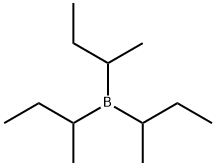

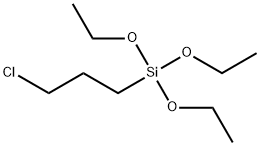
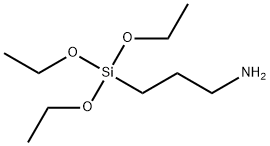
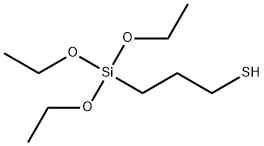
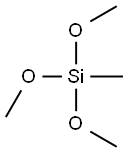
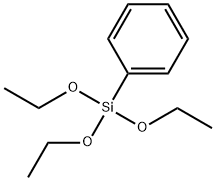
You may like
-
 Triethoxysilane CAS 998-30-1View Details
Triethoxysilane CAS 998-30-1View Details
998-30-1 -
 3-(4-amino-1-oxoisoindolin-2-yl)-1-methylpiperidine-2,6-dione 98%View Details
3-(4-amino-1-oxoisoindolin-2-yl)-1-methylpiperidine-2,6-dione 98%View Details -
 614-19-7 98%View Details
614-19-7 98%View Details
614-19-7 -
 3112-85-4 Methyl phenyl sulfone 98%View Details
3112-85-4 Methyl phenyl sulfone 98%View Details
3112-85-4 -
 20677-73-0 (2,2-diethoxyethyl)methylamine 98%View Details
20677-73-0 (2,2-diethoxyethyl)methylamine 98%View Details
20677-73-0 -
 3-(4-(hydroxyamino)-1-oxoisoindolin-2-yl)piperidine-2,6-dione 98%View Details
3-(4-(hydroxyamino)-1-oxoisoindolin-2-yl)piperidine-2,6-dione 98%View Details -
 57381-49-4 2-bromo-4-chlorobenzonitrile 98%View Details
57381-49-4 2-bromo-4-chlorobenzonitrile 98%View Details
57381-49-4 -
 4,6-dichloropyrimidine-5-carbaldehyde 98%View Details
4,6-dichloropyrimidine-5-carbaldehyde 98%View Details
5305-40-8
